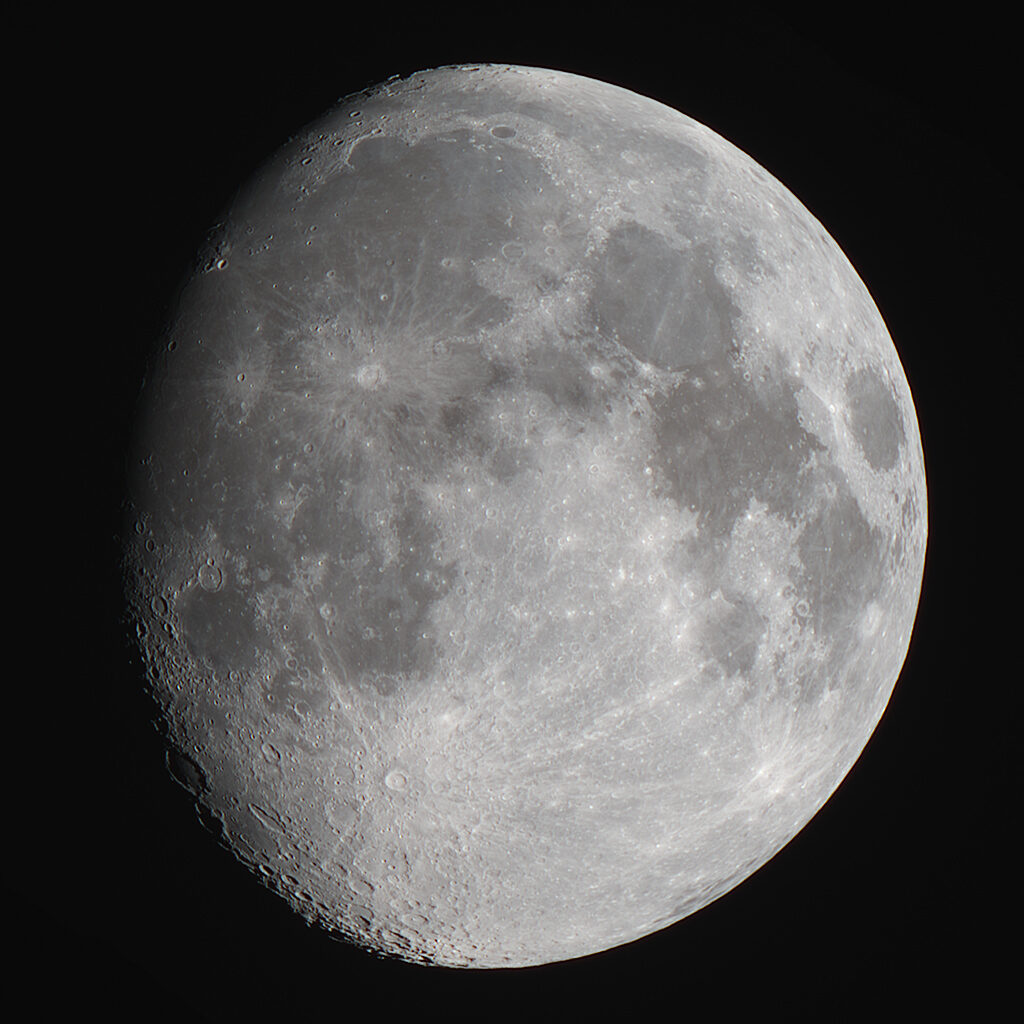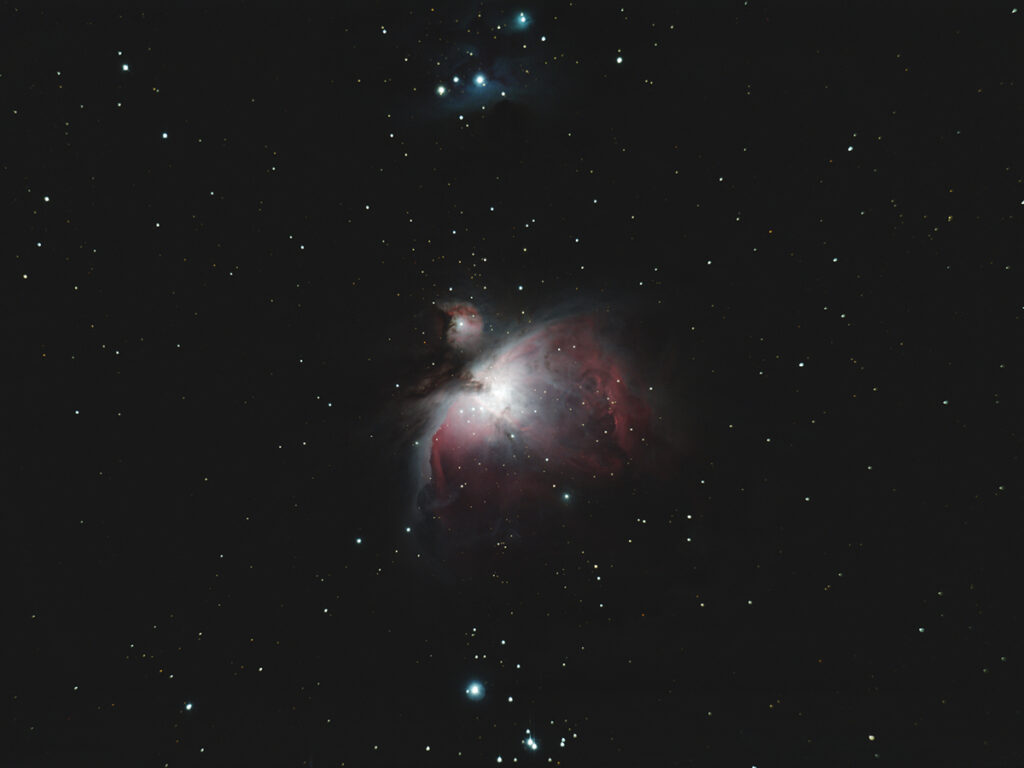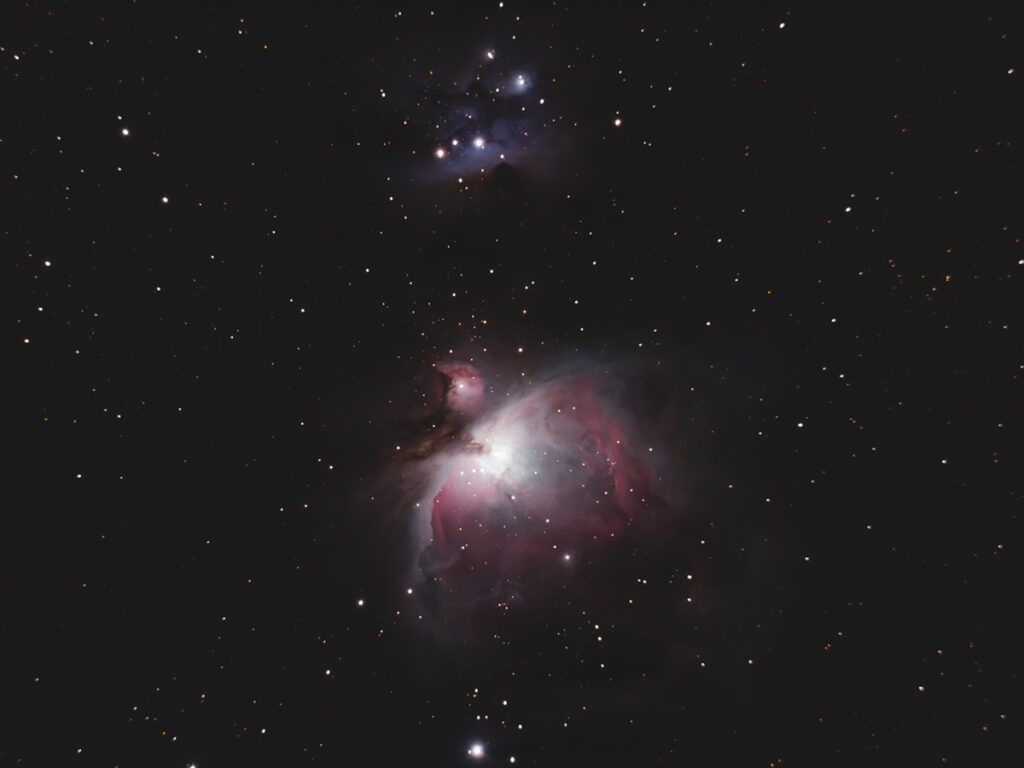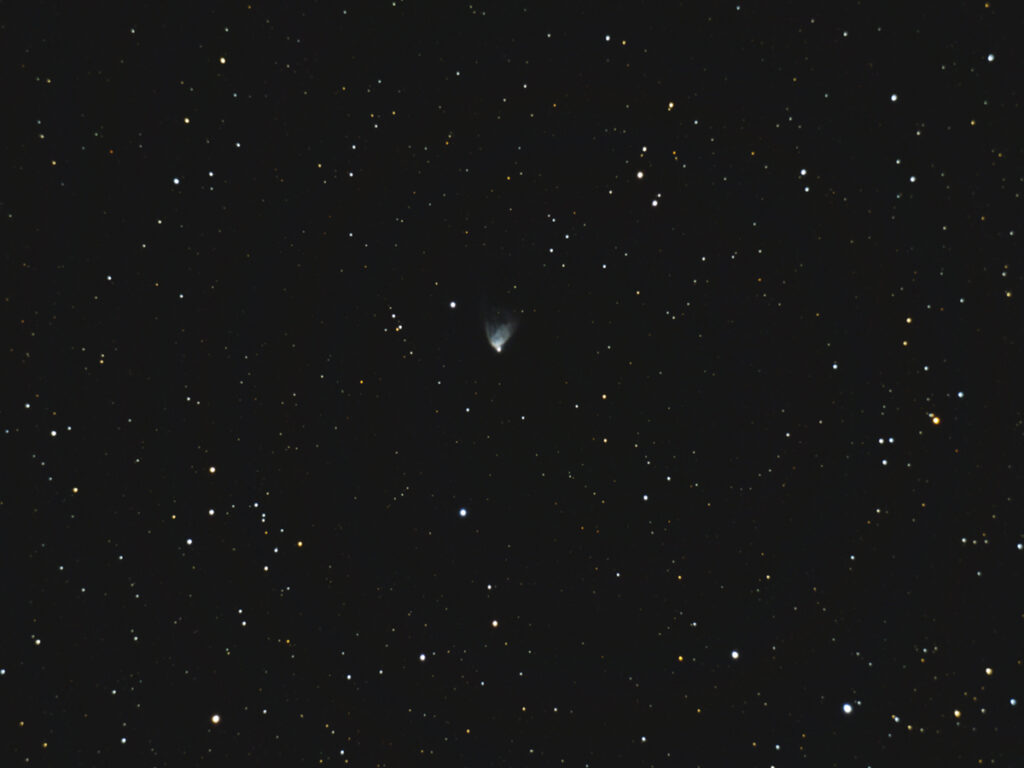
Telescope: Unitron 142 3” f/15
Camera: ZWO ASI 294MC
Filter: Meade IR Cut Filter
Exposure: 128×0.005sec, Gain 200, saved as PNG
Seeing: Good, 4/5
White Balance: Nebulosity Automatic
Software: SharpCap Pro, AutoStakkert, Registax, Nebulosity, Photoshop
This 50 year old Unitron produces a sharp, high contrast image with little or no chromic aberration. The 142 equatorial mount is very stable with excellent slow motion controls and a very accurate synchronous drive. I was curious to see how well it performs with basic imaging and this is the first test image. I chose to use my uncooled ASI294MC as is it a very lightweight color camera with a modest size chip and since there is no shutter there wasn’t a problem with vibrations. This does a fairly good job showing the excellent image quality and the lack of color fringing. Very nice!









Recent Comments